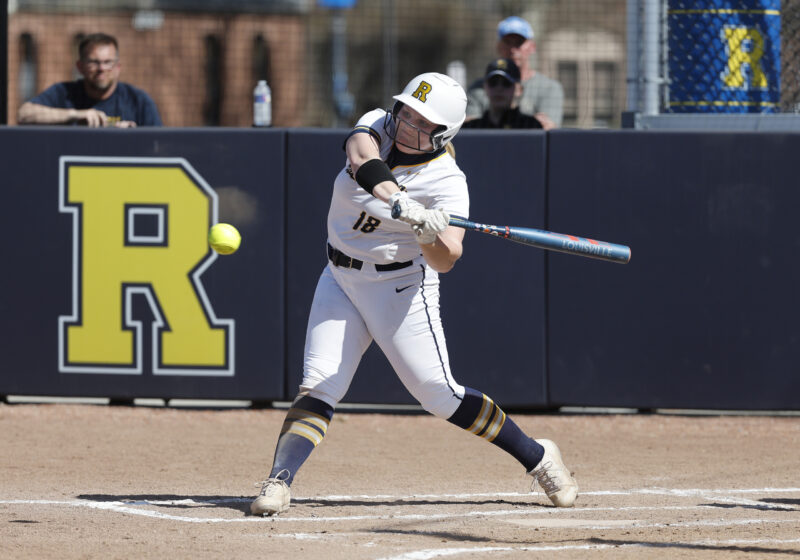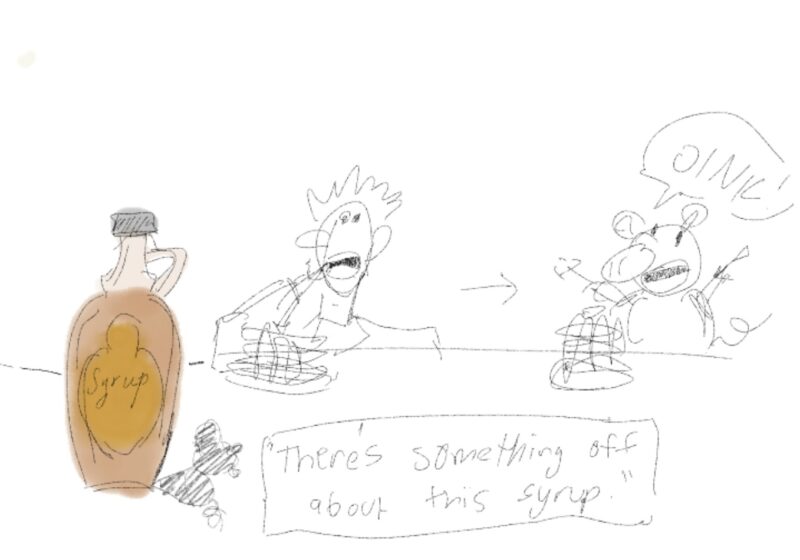Mt. Everest sits as the tallest peak in the world, reaching a height of 29,029 feet. Mt. Kilimanjaro in Africa sits at a mighty 19,341 feet. And UR, sitting in lovely Rochester, N.Y. (the 12th snowiest city in the United States), at a mere 520 feet above sea level, has one thing in common with the massive mountain giants: snow.
And if you think scaling the combined 48,370 feet of both mountains is a task, imagine having to cover over ten times that amount of space. Try 6,080,000 square feet to be exact. And when winter comes, as it tends to do in full force in Rochester, can be covered with snow. And all that snow somehow has to find a new home.
That is also the million dollar question as far as UR Facilities is concerned: How do you go about moving, cleaning and salting that much snow as fast and efficiently as possible?
But before we get into that, how much snow exactly are we talking about here? Sure it may sometimes seem like the one small back-alley path that we take each day to class has a little snow left on it, but in the larger picture, how much snow are we really talking about here?
Now I’m a word guy, but Dan Schied, the Manager of Horticulture and Grounds for UR Facilities, easily painted a very white Ansel Adams picture for me of the whole snow removal process during our conservations last week. One inch of snow may not seem like a lot, but if you add it up across the whole 6,080,000 square feet, it can be. One square inch of show is enough to amount to a solid cube (Read: Solid. Block. Giant, solid, one-piece rectangular prism) that could fill the football field at Fauver Stadium, ultimately reaching a height of 11.26 feet tall.
Now, on any given Rochester night, I think it is fair to say that usually we are dealing with more than one inch of snow. Two inches falling, and double that giant box. And for even more perspective, if you were to take the 15 inches of snow that UR received last Thursday night through Friday morning, you would be staring at a snow monolith 168.9 feet tall.
I bet that the Students’ Association never thought of using snow to try to Fill Fauver.
Joking aside, snow removal at UR is no laughing matter, and something that is taken very, very seriously.
‘Snow is a big topic and the most important service we provide to the University,” Schied said, and after we toured the snow removal facilities and discussed just how much goes into snow removal here at UR, I am inclined to agree.
During the week the operation is staffed 24/7, both with UR staff members and contracted professionals. With one person working evenings and another overnight to be the ‘eyes and ears” of snow removal, their night shift may mirror many students’ study schedules: Midnight to 8:30 a.m. is where most of the work, and usually, the snow happens.
‘The biggest challenge is when we get bursts of snow at sunrise and sunset,” Schied said. ‘This is due to convections over Lake Ontario that are disrupted at these times of the day.”
But bursts of snow aren’t the only thing that Facilities have to counteract. Moving all that snow around, equipment can break, causing them to lose precious time. On top of that, if the snow keeps up, state law can also become a problem. New York State mandates the number of days somebody can work without a day off, and while it hasn’t been an issue this year, several days in a row of strong snow can work the staff as far as they are legally allowed to go.
And, as with any such job, one person being out sick has its own impact. But sometimes, even with perfect machinery and staffing, Mother Nature just gets the best of you.
‘We had one of the worst types of snow and timing, snowing 1.5 to 3 inches per hour between 2 a.m. and 5 a.m. Friday morning,” Schied said. ‘This, combined with the wind, created white-out conditions during that time. We had everything we own or leased out working from midnight on and couldn’t stay ahead of this rate and heavy snow.”
It’s a night like this when sometimes tough decisions have to be made. There might not be time to get every sidewalk cleared, but Facilities has a plan set up to clear the routes that they find students use most often, and makes sure to get those cleared first.
That isn’t to say they don’t have help. With several specialized machines, from sweepers to plows, UR has several ways that are always prepped to go out and tackle the snow.
And for the roads, UR uses SEACO’s ‘Ice B’Gone” salt treatment. This ‘magic salt” was a recent addition to the snow removal arsenal, and helped bring about a thirty percent reduction in the amount of salt needed. It also works longer and in much lower
temperatures than regular salt, making it a true win-win solution as far as road treatment goes.
And as if that weren’t enough, for all you save-the-environment types, the new salt product recently won the EPA’s Design for Environment Award.
So not only does it save the roads, but it helps save the whales as well.
On top of everything that Facilities can do, sometimes it just needs to rely on luck and the weather. They also make sure to rely on their other every watchful helpers: anybody who calls in to the Snow Removal Hotline. The number, x50000 from a campus phone, is open 24/7 seven days a week and allows students, staff members and faculty alike the ability to call in and report areas of snow that have built up or haven’t yet been cleared.
So far this season, UR has been lucky enough to avoid the snow that the lower Eastern U.S. has seen. Recent storms led to closings across Maryland and other coastal areas. But the bigger question looms: Has such strong snow ever caused UR to close down?
Schied, who has been working at UR for 16 years, could only recall one time such an incident had occurred.
The culprit: a whopping 42 inches of snow over the course of three to five days, back in the good old winter of 1999.
With a track record like that, it is hard to not be taken aback at just how much work goes on behind the scenes while students sleep to make sure, as much as possible, that the snow is gone by the time that blaring alarm rings for class.
And for Schied and his staff, their goal is a simple one.
‘[Our goal is to] provide safe passage and limit the inconvenience of winter,” he said. ‘We can’t do away with it, but we can work tirelessly to make the safest environment we can and limit the inconvenience of it.”
Schied was also quick to mention the real work behind the snow services the people who are actually out operating the machines and working to clean the pathways.
‘Our snow removal professionals are the ones making the sacrifice … snow doesn’t seem to know what holiday it is,” Schied said. ‘This is a combination of in-house staff and management and partnerships with very dedicated vendors that all work together to achieve the results we have.”
So next time you wake up and notice there is a little snow outside your door, just remember that there was over 6 million square feet around the River Campus that also needed to be taken care of.
Or, if you are really concerned, be proactive and call it in to the Snow Hotline. To put it in words by a famous forest ranger, ‘Only you can prevent UR snow blizzards.”





